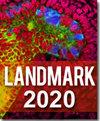Designing an mRNA Vaccine against P. jirovecii Involved in Fatal Pneumonia Infections via Comparative Proteomics and Reverse Vaccinology Approaches
IF 3.1
4区 生物学
Q2 Immunology and Microbiology
引用次数: 0
Abstract
Background : Pneumocystis jirovecii is the most emerging life-threating health problem that causes acute and fatal pneumonia infection. It is rare and more contagious for patients with leukemia and immune-deficiency disorders. Until now there is no treatment available for this infection therefore, it is needed to develop any treatment against this pathogen. Methods : In this work, we used comparative proteomics, robust immune-informatics, and reverse vaccinology to create an mRNA vaccine against Pneumocystis jirovecii by targeting outer and transmembrane proteins. Using a comparative subtractive proteomic analysis of two Pneumocystis jirovecii proteomes, a distinct non-redundant Pneumocystis jirovecii (strain SE8) proteome was chosen. Seven Pneumocystis jirovecii transmembrane proteins were chosen from this proteome based on hydrophilicity, essentiality, virulence, antigenicity, pathway interaction, protein-protein network analysis, and allergenicity. Objective : The reverse vaccinology approach was used to predict the immunogenic and antigenic epitopes of major histocompatibility complex (MHC) I, II and B-cells from the selected proteins on the basis of their antigenicity, toxicity and allergenicity. These immunogenic epitopes were linked together to construct the mRNA-based vaccine. To enhance the immunogenicity, suitable adjuvant, linkers (GPGPG, KK, and CYY), and PRDRE sequences were used. Results : Through predictive modeling and confirmation via the Ramachandran plot, we assessed secondary and 3D structures. The adjuvant RpfE was incorporated to enhance the vaccine construct’s immunogenicity (GRAVY index: –0.271, instability index: 39.53, antigenicity: 1.0428). The physiochemical profiling of vaccine construct was predicted it an antigenic, efficient, and potential vaccine. Notably, strong interactions were observed between the vaccine construct and TLR-3/TLR-4 (–1301.7 kcal/mol − 1 and –1374.7 kcal/mol − 1 ). Conclusions : The results predicted that mRNA-based vaccines trigger a cellular and humoral immune response, making the vaccine potential candidate against Pneumocystis jirovecii and it is more suitable for in-vitro analysis and validation to prove its effectiveness.通过比较蛋白质组学和反向疫苗学方法设计一种针对涉及致命性肺炎感染的 P. jirovecii 的 mRNA 疫苗
背景:吉罗韦氏肺囊虫是最新近出现的威胁生命的健康问题,可导致急性和致命性肺炎感染。这种疾病非常罕见,而且对白血病和免疫缺陷疾病患者的传染性更强。到目前为止,还没有针对这种感染的治疗方法,因此需要开发针对这种病原体的治疗方法。方法:在这项工作中,我们利用比较蛋白质组学、强大的免疫信息学和反向疫苗学,通过靶向外层蛋白和跨膜蛋白,创建了针对肺孢子虫的 mRNA 疫苗。通过对两个肺孢子虫蛋白质组进行比较减法蛋白质组分析,选择了一个独特的非冗余肺孢子虫(SE8 株)蛋白质组。根据亲水性、必需性、毒力、抗原性、通路相互作用、蛋白质-蛋白质网络分析和致敏性,从该蛋白质组中选择了七个肺孢子虫跨膜蛋白。目的:根据所选蛋白质的抗原性、毒性和致敏性,采用反向疫苗学方法预测主要组织相容性复合体(MHC)I、II 和 B 细胞的免疫原性和抗原表位。这些免疫原表位被连接在一起,构建了基于 mRNA 的疫苗。为了增强免疫原性,使用了合适的佐剂、连接剂(GPGPG、KK 和 CYY)和 PRDRE 序列。结果:通过预测建模和拉马钱德兰图的确认,我们评估了二级和三维结构。加入佐剂 RpfE 增强了疫苗构建体的免疫原性(GRAVY 指数:-0.271,不稳定指数:39.53,抗原性:1.0428)。疫苗构建体的理化分析表明,它是一种具有抗原性、高效和潜力的疫苗。值得注意的是,在疫苗构建体与 TLR-3/TLR-4 之间观察到了强烈的相互作用(-1301.7 kcal/mol - 1 和 -1374.7 kcal/mol - 1)。结论 :研究结果预测,基于 mRNA 的疫苗可引发细胞和体液免疫反应,使该疫苗成为抗击肺孢子虫的潜在候选疫苗,更适合进行体外分析和验证,以证明其有效性。
本文章由计算机程序翻译,如有差异,请以英文原文为准。
求助全文
约1分钟内获得全文
求助全文
来源期刊

Frontiers in Bioscience-Landmark
生物-生化与分子生物学
CiteScore
3.40
自引率
3.20%
发文量
301
审稿时长
3 months
期刊介绍:
FBL is an international peer-reviewed open access journal of biological and medical science. FBL publishes state of the art advances in any discipline in the area of biology and medicine, including biochemistry and molecular biology, parasitology, virology, immunology, epidemiology, microbiology, entomology, botany, agronomy, as well as basic medicine, preventive medicine, bioinformatics and other related topics.
 求助内容:
求助内容: 应助结果提醒方式:
应助结果提醒方式:


